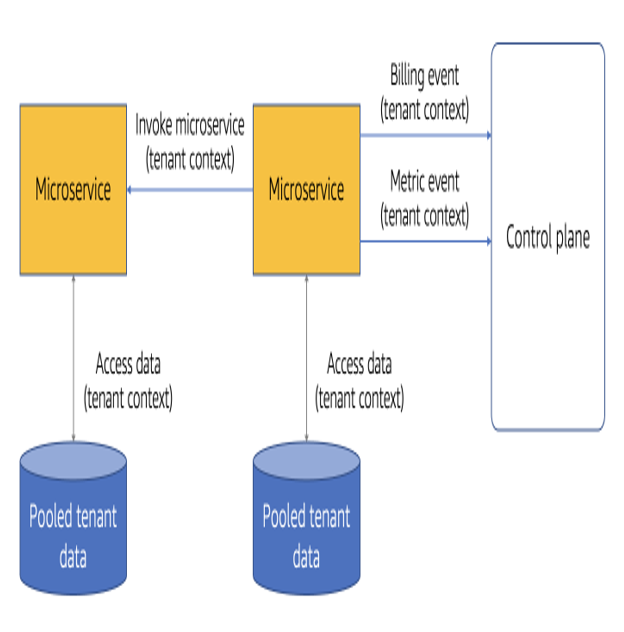The Full Stack Pool Model
The full stack pool model, as its name suggests, represents a complete shift from the full stack silo mindset and mechanisms we’ve been exploring. With the full stack pool model, we’ll now look at SaaS environments where all of the resources for our tenants are running in a shared infrastructure model.
For many, the profile of a fully pooled environment maps to their classic notion of multi-tenancy. It’s here where the focus is squarely on achieving economies of scale, operational efficiencies, cost benefits, and a simpler management profile that are the natural byproducts of a shared infrastructure model. The more we are able to share infrastructure resources, the more opportunities we have to align the consumption of those resources with the activity of our tenants. At the same time, these added efficiencies also introduce a range of new challenges.
Figure 3-7 provides a conceptual view of the full stack silo model. You’ll see that I’ve still included that control plane here just to make it clear that the control plane is a constant across any SaaS model. On the left of the diagram is the application plane, which now has a collection of application services that are shared by all tenants. The tenants shown at the top of the application plane are all accessing and invoking operations on the application microservices and infrastructure.

Figure 3-7. A full stack pooled model
Now, within this pool model, tenant context plays a much bigger role. In the full stack silo model, tenant context was primarily used to route tenants to their dedicated stack. Once a tenant lands in a silo, that silo knows that all operations within that silo are associated with a single tenant. With our full stack pool, however, this context is essential to every operation that is performed. Accessing data, logging messages, recording metrics–all of these operations will need to resolve the current tenant context at run-time to successfully complete their task.
Figure 3-8 gives you a better sense of how tenant context touches every dimension of our infrastructure, operations, and implementation are influenced by this tenant context in a pooled model. This conceptual diagram highlights how each microservice must acquire tenant context and apply it as part of its interactions with data, the control plane, and other microservices. You’ll see tenant context being acquired and applied as we send billing events and metrics data to the control plane. You’ll see it injected in your call to downstream microservices. It also shows up in our interaction with data.

Figure 3-8. Tenant context in the full stack pooled environment
The fundamental idea here is that, when we have a pooled resource, that resource belongs to multiple tenants. As a result, tenant context is needed to apply scope and context to each operation at run-time.
Now, to be fair, tenant context is valid across all SaaS deployment models. Silo still needs tenant context as well. What’s different here is that the silo model knows its binding to the tenant at the moment it’s provisioned and deployed. So, for example, I could associate an environment variable as the tenant context for a siloed resource (since its relationship to the tenant does not change at run-time). However, a pooled resource is provisioned and deployed for all tenants and, as such, it must resolve its tenant context based on the nature of each request it processes.
As we dig deeper into more multi-tenant implementation details, we’ll discover that these differences between silo and pool models can have a profound impact on how we architect, deploy, manage, and build the elements of our SaaS environment.
